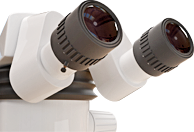Thermal Desorption Gas Chromatography and TD-GCMS
 Thermal Desorption Gas Chromatography (TD GC)
Thermal Desorption Gas Chromatography (TD GC)
Thermal desorption is a sampling technique for gas chromatography that can be used to analyse and identify with GC-MS volatiles and semi-volatiles from a variety of different samples down to trace levels beyond that possible by Headspace GC-MS. The mechanism used to prepare samples will vary depending on whether the samples are solid, liquid or gaseous.
Typical Applications
- Exhaust or emission gas analysis for benzene, toluene and xylene.
- Identification of unknown organic chemical contaminants split on materials and surfaces.
- Volatile and semi-volatile compounds in soil or waste streams.
- Assessing if materials contain volatile species that might accelerate combustion for fire situations.
- Analysis of samples that present with very challenging matrices such as ointments or creams including in deformulation or trace contamination activities.
Principle of Thermal Desorption
Thermal desorption works by heating the sample to an elevated temperature that drives off any semi-volatiles, VOC or volatile VOC components. These components are then transferred to a prepared adsorbent trap where they are collected. Once the sampling is complete the adsorbent trap is then heated to a high temperature thermally desorbing all the components collected in the trap which are passed into a GC column for separation and finally detection using either Flame Ionisation Detection or Mass Spectrometric Detection.
Thermal desorption has several potential benefits over conventional GC sampling, it enables the concentration of components of interest as they are collected in the trap while unwanted solvents and water are vented to waste. This makes it an ideal technique for qualitative trace level analysis of unknowns when coupled with mass spectrometry by GC-MS.
Thermal Desorber Instrumentation
The automated Perkin Elmer TurboMatrix 150 Thermal Desorber ATD at LPD Lab Services is capable of running multiple automated samples collected in tubes at temperatures between 100 and 400degC.

